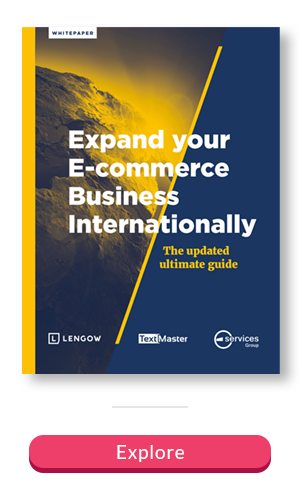Making sure your clients are happy and always providing them with services or products that meet their expectations are the main objectives of any company. And as your business grows internationally, you also need high-quality translations! Packaging, communication media, websites, marketing content and so on; sometimes it’s hard to maintain the same level of quality for every different item that needs translation! This is why we invite you to discover our 3 tips to ensure your translations are always high quality.
1. Choose the right translator(s) for every project
First of all, make sure you choose a professional translator who is a native speaker. Only a native speaker will be able to convey the essence of your text in their own mother tongue. Feel free to provide the translator with a clear and detailed brief about your expectations:
- Context: who are you? what is your target? what is your objective?
- Editorial preferences: style, tone, rules of writing, terminology, etc.
You should also preferentially opt for a certified translator who has been accredited by professionals and who is an expert in your area of business or in the content type you want translated. For example, if you want to translate a white paper on social networks, make sure you select a translator with expertise in social media. Additionally, if you want to translate content that has anything to do with current events, choose a native speaker from the geographical area in question, who will be up to date with the local news.
2. Use advanced translation support technology
While translation is a job for humans (and will remain so for a long time to come according to us!), there is a lot of translation support technology out there which can help translators deliver relevant translations that are consistent with your company’s message and style. This technology also has the advantage of saving translators and your company time, as well as cutting down on your translation costs.
Collaborative translation memories
A translation memory recycles all of your already-translated content and counts up all the segment repetitions in real time. As it is collaborative, it can be used by several translators working on the same project at the same time and thus guarantees the consistency and high quality of your translations. Also, because the segments that have already been translated are automatically incorporated, you don’t have to pay for them to be translated again, meaning you save money (up to 50% depending on the type of text).
Interactive glossaries
A glossary groups together a set of terms that are relevant to a translation project, such as: words specific to the company, to that sector, SEO key words, technical terms, etc. These terms are indexed in their source language along with their translations in the target languages.
This multilingual database can be shared with all the translators working on that project, meaning you can thus ensure that specific terms are translated exactly the same way by different translators and across all your different texts.
3. Get help with managing your translation projects
Sometimes when you get text translated, it is impossible for you to check the quality of the translation you’ve received, especially when it’s a translation into a language that nobody in your company is an expert in. This means it’s very helpful to be supported by a project manager from your service provider, who will be your go-to contact for the project. They can help you with various issues such as:
- Putting together a dedicated team of professional, native language translators
- Negotiating deadlines with authors
- Creating the brief
- Creating glossaries
- SEO optimisation of your text
- Ensuring proofreading is carried out by native speakers
Selecting the right translators, using support technology and getting help with managing the project are the 3 tips that guarantee your translations are always high quality which, in turn, creates a positive impact on your international growth.
You should also pay close attention to international standards such as the ISO standards, which provide essential quality benchmarks. We’re very proud to have recently been accorded the ISO 9001:2015 certification by the Bureau Veritas body, which has thus rewarded our process-based approach and our efforts to continually improve.







